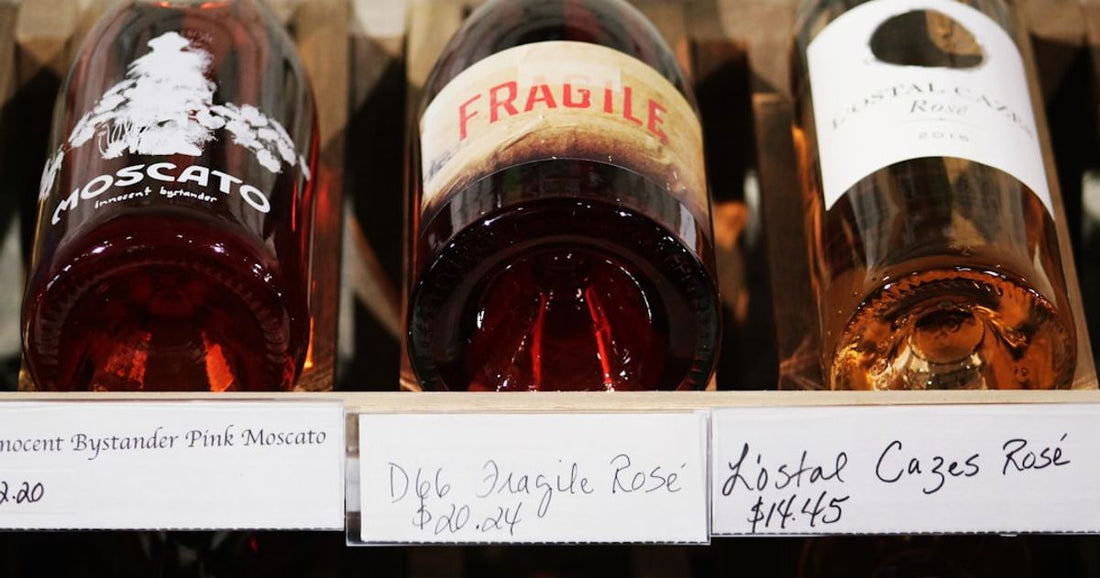
How Vintage Variation Affects Wine Taste
Share
Wine aficionados often speak of the romance and mystery wrapped within each bottle of wine. Much of this allure stems from the concept of vintage variation, a phenomenon that renders each year's harvest unique, thereby influencing the taste and character of the wine produced. In the world of Spanish wines, vintage variation is not just a factor; it is a celebrated aspect of winemaking that contributes significantly to the diversity and richness of Spain's wine heritage. This article delves into the fascinating world of vintage variation, exploring how it shapes the unique flavors of Spanish wines and why understanding each year's harvest is crucial for appreciating the full spectrum of tastes offered by this vibrant wine-producing country.
Key Takeaways
- Vintage variation refers to the changes in wine characteristics from one year to another, primarily due to climatic conditions.
- In Spain, the impact of vintage variation is pronounced due to the country's diverse climate and geography.
- Understanding vintage variation can enhance the wine tasting experience, allowing enthusiasts to appreciate the nuances of each year's production.
- Technological advancements and traditional winemaking techniques both play crucial roles in managing vintage variation.
Understanding Vintage Variation
Vintage variation is a term that encapsulates the year-to-year differences in wine production, primarily influenced by the climatic conditions during the grape growing season. These variations can significantly affect the flavor, aroma, color, and overall quality of the wine.
The Impact of Climate on Wine
Climate plays a pivotal role in shaping the characteristics of wine. Factors such as temperature, rainfall, sunlight, and humidity can all influence the growth and ripening of grapes. In years with optimal climate conditions, grapes can achieve perfect balance, leading to wines of exceptional quality. Conversely, challenging weather conditions, such as frost, drought, or excessive rainfall, can hinder grape development, affecting the wine's taste and aroma.
Spain's diverse geography, ranging from the cool, rainy regions of the north to the hot, dry areas of the south, means that the impact of climate on wine production can vary significantly across the country. This diversity contributes to the wide range of wine styles and flavors found in Spanish wines, with each region expressing its unique climatic influence.
Technological Interventions and Traditional Techniques
Winemakers employ a variety of techniques to mitigate the effects of vintage variation and ensure consistent quality. Advances in technology, such as controlled fermentation processes and precision viticulture, allow winemakers to monitor and adjust to the conditions of each vintage more effectively.
Traditional winemaking techniques, such as blending wines from different vintages (non-vintage wines) or selecting only the best grapes (a practice known as triage), are also used to maintain quality. These methods help winemakers to balance the wine's characteristics, ensuring that the essence of the vineyard and the vintage is preserved.
The Art of Tasting Vintage Variation
Tasting and appreciating the nuances of vintage variation is an art form that requires both knowledge and experience. Each vintage tells a story of the year's climatic journey, and understanding this story can greatly enhance the wine tasting experience.
Identifying Vintage Characteristics
The first step in appreciating vintage variation is learning to identify the specific characteristics that define a particular year's wine. This might include noting the wine's color, which can indicate the ripeness of the grapes and the weather conditions during the growing season. The aroma and flavor profiles can also provide clues, with certain fruit, floral, or mineral notes being more pronounced in wines from specific vintages.
Comparing Different Vintages
Comparing wines from different vintages side by side is a fascinating way to explore the impact of vintage variation. This exercise allows tasters to directly experience the differences in taste, aroma, and texture that result from the changing conditions of each year. It's also an opportunity to observe how wines evolve over time, gaining complexity and depth with age.
Vintage Variation in Spanish Wine Regions
Spain's wine regions each have their unique climatic conditions, which influence the vintage variation experienced in their wines. From the cool, maritime climate of Galicia to the hot, arid conditions of Andalusia, the diversity of Spain's wine regions contributes to a rich tapestry of flavors and styles.
Ribera del Duero: A Case Study
The Ribera del Duero region is renowned for its bold, full-bodied red wines, primarily made from the Tempranillo grape. The region's continental climate, characterized by hot summers and cold winters, along with its high altitude, contributes to significant vintage variation. Wines from cooler, wetter years tend to be more elegant and aromatic, while those from hotter, drier years are more powerful and concentrated. For an in-depth exploration of vintage variation in Ribera del Duero wines, consider reading our article on Vintage Variation in Ribera del Duero Wines.
The Influence of Vintage on Aging Potential
The vintage of a wine also plays a crucial role in determining its aging potential. Generally, wines from years with optimal growing conditions have a better balance of acidity, tannins, and fruit, which contributes to their longevity. Understanding the characteristics of different vintages can help collectors and enthusiasts make informed decisions about which wines to age and for how long.
The Future of Vintage Variation
As climate change continues to impact weather patterns around the world, the wine industry faces new challenges and opportunities in managing vintage variation. While some regions may benefit from warmer temperatures and longer growing seasons, others may struggle with increased volatility and extreme weather events.
Adapting to Change
Winemakers are adapting to these changes through innovative viticulture and winemaking practices. From exploring new grape varieties better suited to changing conditions, to implementing water management and soil health strategies, the industry is actively seeking solutions to ensure the continued production of high-quality wines.
The Role of Technology
Technology also plays a crucial role in navigating the challenges of vintage variation in the face of climate change. Precision agriculture techniques, such as satellite imagery and soil sensors, allow winemakers to monitor vineyard conditions in real-time, making adjustments as needed to optimize grape quality. The integration of technology with traditional winemaking practices ensures that the unique character of each vintage is preserved, even as the climate evolves.
For more insights into how technology is shaping the future of Spanish winemaking, check out our article on The Role of Technology in Spanish Winemaking.
Conclusion
Vintage variation is a fundamental aspect of winemaking that adds depth and complexity to the world of wine. In Spain, the diversity of climates and landscapes across the country's wine regions results in a wide range of vintage expressions, each with its unique characteristics and stories. By understanding and appreciating the nuances of vintage variation, wine enthusiasts can deepen their connection to the wines they love, exploring the rich tapestry of flavors and aromas that each year's harvest brings.
As the wine industry continues to adapt to the challenges of climate change, the role of vintage variation will undoubtedly evolve. However, the essence of what makes each vintage special — the interplay between the land, the climate, and the winemaker's art — will remain a central theme in the story of wine.


